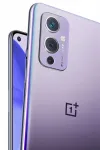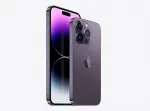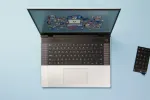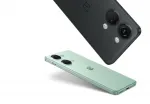The LG F7250, known by the model name LG F7250, was a mobile device that was released in 2004 during the fourth quarter. It has since been discontinued, but it remains a popular choice for those looking for a reliable and straightforward mobile device. In this comprehensive description, we will go through all of the specifications of the LG F7250, giving you a better understanding of this device.
The Body of the LG F7250 was designed with a Mini-SIM slot and weighed only 115 grams (4.06 oz), making it lightweight and easy to carry around. Its dimensions were 98 x 49 x 25 mm (3.86 x 1.93 x 0.98 in), making it compact and fitting perfectly in the palm of your hand. This size also made it easy to slip into a pocket or bag without taking up too much space.
In terms of colors, the LG F7250 did not come in a specific color. This left it up to the user to customize the appearance of their device by adding a case or choosing a pre-loaded wallpaper.
For wireless connectivity, the LG F7250 did not have WLAN, Bluetooth, or GPS capabilities. However, it did have an Infrared port, allowing users to transfer data, such as photos or contacts, to other compatible devices.
The LG F7250 also did not have a 3.5mm headphone jack, so users would have to rely on the phone's loudspeaker or a compatible accessory for audio. It also had vibration settings and downloadable polyphonic ringtones for customizable alerts.
The camera on the LG F7250 was not a feature of this device, meaning that users would not be able to take photos or videos.
Moving on to the battery life of the LG F7250, it was equipped with a 950 mAh Li-Ion battery that was removable. This battery could last up to 200 hours on standby and up to 2 hours and 30 minutes of talk time, making it suitable for those who are constantly on the go.
The LG F7250 had a 1.9-inch TFT display with a resolution of 128 x 160 pixels and 65K colors. This offered a clear and bright screen for users to view their downloaded wallpapers or documents. The display also had 12 lines, giving users ample space to view their messages.
The LG F7250 was compatible with 2G networks, specifically GSM 900 / 1800 / 1900 bands. It did not support EDGE, but it did support GPRS Class 10 technology, allowing for basic Internet browsing.
One of the unique features of the LG F7250 was its Push-to-Talk function, which allowed users to use a VoIP service for voice communication. It also had Java capabilities, meaning that users could download and use a variety of applications and games. Its browser was WAP 2.0/xHTML, and it could also be used for sending and receiving SMS, EMS, and MMS messages.
In terms of memory, the LG F7250 came with 1MB of internal storage. It did not have a card slot for expandable storage but could store up to 255 entries and photos for contacts as well as 10 dialed, 10 received, and 10 missed call records.
Overall, the LG F7250 was a simple and reliable mobile device with features that were suitable for basic communication and entertainment purposes. Its compact size, lightweight body, and long battery life made it a popular choice for those looking for a phone that was easy to use on a daily basis. Despite being discontinued, the LG F7250 is still remembered by many as a classic mobile device from LG.









